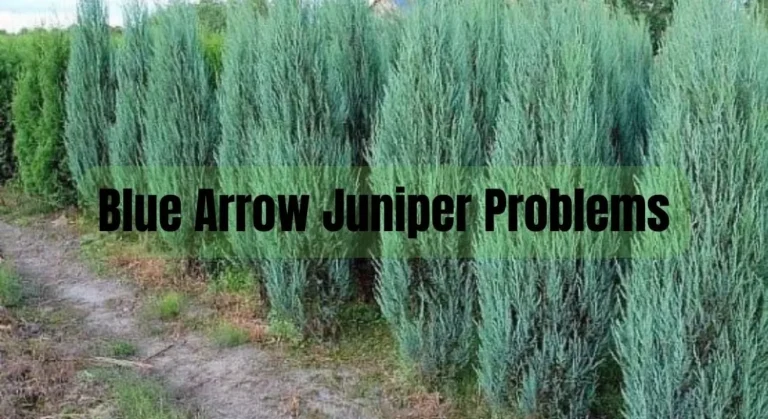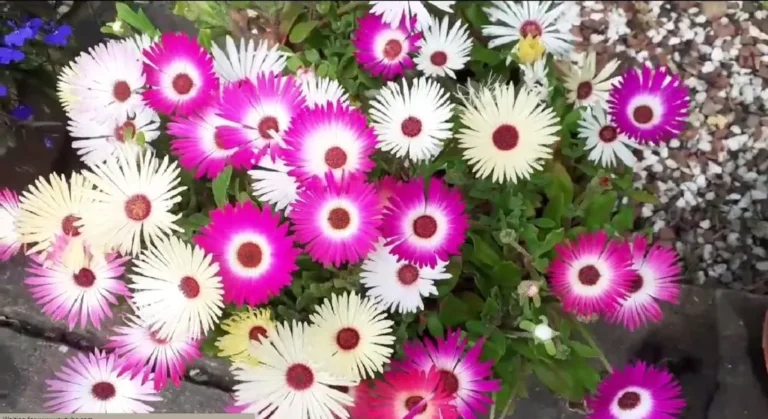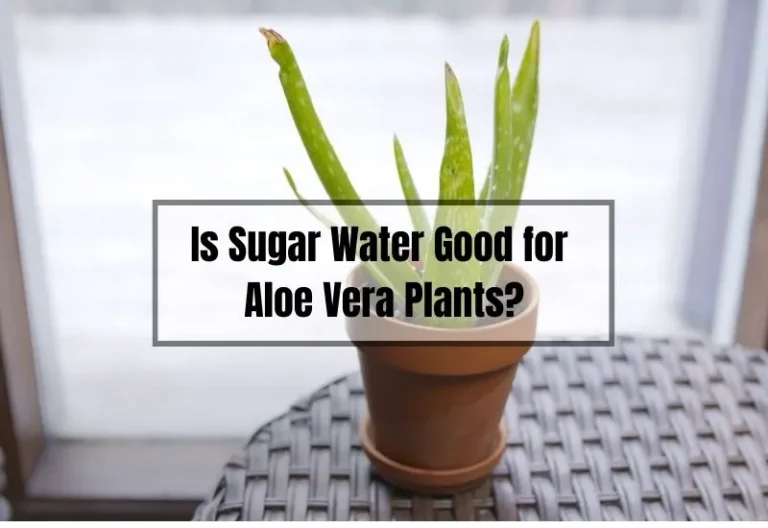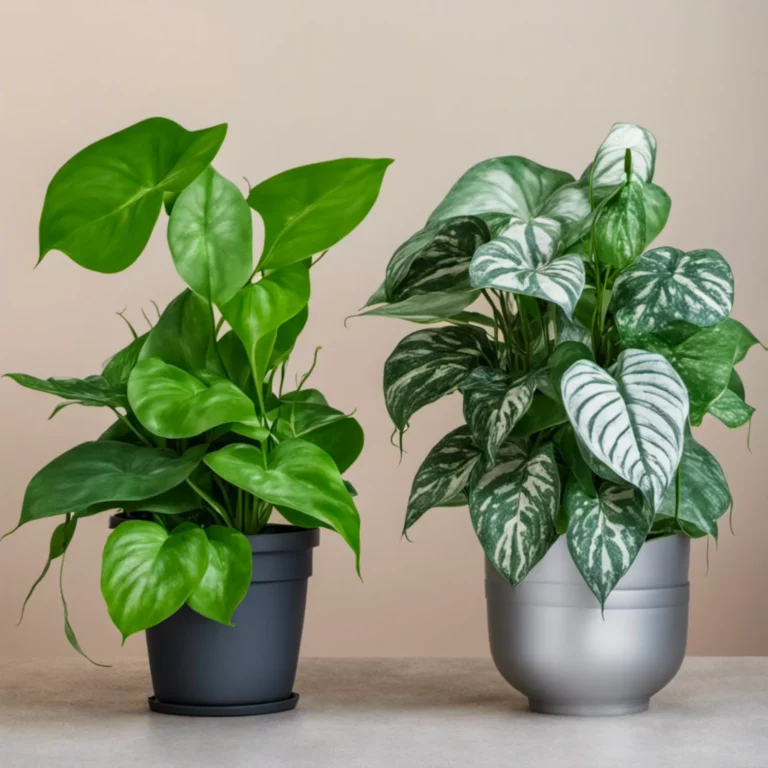Overwatered Aloe vs Underwatered: How to Identify and Fix the Problem
From Louise: Passionate about gardening, I specialize in plant care and flower knowledge. I’m here to share my expertise and assist with your gardening queries. Feel free to ask any questions or seek advice on lawn care—I’ll respond within 24 hours!
If you’re a plant owner, you know that caring for your plants can be a challenge. One of the most common mistakes people make when caring for their aloe vera plants is overwatering or underwatering them.
These issues can cause significant damage to your plant, so it’s essential to know how to recognize the signs and prevent them from happening.
In this article, you’ll learn about the differences between overwatered aloe vera plants and underwatered ones.
We’ll discuss how to recognize the signs of each issue and provide tips on how to prevent and treat them. By the end of this article, you’ll be equipped with the knowledge you need to keep your aloe vera plant healthy and thriving.
Key Takeaways
- Overwatering and underwatering your aloe vera plant can cause significant damage to the plant.
- Signs of overwatering include mushy leaves and brown spots, while signs of underwatering include yellowing leaves and brittle roots.
- To prevent overwatering and underwatering, make sure to find the right balance when watering your plant and adjust as needed.
Overwatered Aloe vs Underwatered
If you’re growing an aloe vera plant, it’s important to understand the difference between overwatering and underwatering.
Both can be detrimental to the health of your plant and cause serious damage if not addressed promptly.
Signs of Overwatered Aloe
Overwatering is one of the most common mistakes made when taking care of aloe plants. Signs of overwatered aloe include yellow leaves, brown spots, and root rot. Yellow leaves indicate that the roots are sitting in water, and the plant is not receiving enough oxygen.
Brown spots are usually soft and mushy and can be a sign of fungal growth. When an aloe plant is overwatered, the roots can become waterlogged, leading to root rot. Signs of root rot include a foul smell coming from the soil and black, mushy roots.
Signs of Underwatered Aloe
Underwatering is another common mistake made when taking care of aloe plants. Signs of underwatered aloe include thin leaves, dry soil, and brown tips.
Thin leaves indicate that the plant is not getting enough water, and may start to curl or shrink in size.
Dry soil can cause the potting mix to pull away from the sides of the pot. Brown tips are an indication that the plant is not getting enough water and the leaves are drying out.
How to Fix Overwatered or Underwatered Aloe
If you suspect that your aloe plant is overwatered or underwatered, there are steps you can take to fix the problem. First, check the soil moisture level using a moisture meter or by sticking your finger in the soil.
If the soil is wet, your plant may be overwatered. If the soil is dry, your plant may be underwatered. Adjust watering accordingly. If your plant is overwatered, reduce watering and allow the soil to dry out before watering again.
If your plant is underwatered, increase watering and make sure the soil is evenly moist. If your plant has root rot, you may need to repot it in fresh, well-draining soil. Be sure to remove any mushy or black roots before repotting.
Recognizing Overwatered Aloe
If you’re a plant parent, you know that overwatering your aloe vera plant can be just as harmful as underwatering it.
Overwatering can lead to root rot, which can be fatal to your beloved plant. In this section, we’ll discuss how to recognize if your aloe vera has been overwatered.
Signs of Overwatering
Here are some of the signs that your aloe vera has been overwatered:
- Mushy leaves: If the leaves of your aloe vera feel mushy or soft, it’s a sign that the plant has been overwatered. The leaves may also turn brown or yellow.
- Brown or black spots on leaves: Overwatering can cause brown or black spots on the leaves of your aloe vera. These spots may be soft or mushy to the touch.
- Root rot: If your aloe vera has been overwatered for an extended period, it may develop root rot. You can tell if your plant has root rot by gently pulling it out of its pot and examining the roots. If the roots are brown, black, or mushy, your plant has root rot.
Effects on Aloe Health
Overwatering can have a significant impact on the health of your aloe vera. Here are some of the effects of overwatering:
- Root rot: As mentioned earlier, overwatering can cause root rot, which can be fatal to your aloe vera.
- Stunted growth: Overwatering can stunt the growth of your aloe vera. The plant may not grow as tall as it should, and its leaves may be smaller than usual.
- Fungal infections: Overwatering can create the perfect environment for fungal infections to thrive. These infections can cause damage to your aloe vera and may be difficult to get rid of.
To avoid overwatering your aloe vera, make sure to allow the soil to dry out completely between watering.
You can also consider using a well-draining soil mix and a pot with drainage holes to prevent water from sitting at the bottom of the pot.
If you suspect that your aloe vera has been overwatered, adjust your watering schedule accordingly and consider repotting it in fresh soil.
Related Posts:
- Overwatering Houseplants: How to Avoid Killing Your Plants
- Root Rot in Plants: Causes, Symptoms, and Treatment
Identifying Underwatered Aloe
If you’re an aloe plant parent, it’s essential to know how to identify whether your plant is underwatered or overwatered.
Underwatering is a common issue that can cause significant damage to your aloe plant. Here are the signs to look out for:
Symptoms of Underwatering
- Yellowing of the leaves: When an aloe plant is underwatered, the leaves will start to turn yellow from the tips to the base.
- Drooping: An underwatered aloe plant will start to droop and wilt, making it look unhealthy.
- Browning of the leaf tips: The tips of the leaves will start to turn brown and dry out when the plant is not receiving enough water.
- Drying of leaf edges: The edges of the leaves will start to dry out and curl when the plant is not getting enough water.
- Brown spots: Brown spots will start to appear on the leaves when the plant is not receiving enough water.
- Drying of the soil: The soil will start to dry out and pull away from the edges of the pot when the plant is not receiving enough water.
- Brittle roots: The roots will become brittle and start to turn brown when the plant is not receiving enough water.
Impact on Aloe Wellbeing
When an aloe plant is underwatered, it can have a severe impact on its wellbeing. Here are the consequences of underwatering:
- Stunted growth: An underwatered aloe plant will not grow as quickly or as healthily as a properly watered one.
- Reduced healing properties: Aloe vera is famous for its healing properties, but an underwatered plant will not have as many nutrients to produce the gel that has these properties.
- Increased susceptibility to pests and diseases: An underwatered plant is more vulnerable to pests and diseases, as it is not as healthy as a properly watered one.
- Death: If left untreated, an underwatered aloe plant will eventually die.
It’s essential to check your aloe plant regularly to ensure that it’s not underwatered.
If you notice any of the above symptoms, you should act quickly to remedy the situation. Proper watering is essential to the health and wellbeing of your aloe plant.
Related Posts:
Prevention and Treatment
When it comes to taking care of your aloe plant, prevention is always better than cure. Overwatering and underwatering are the most common problems that aloe plants face. Here are some tips to help you prevent these issues from happening:
Watering Techniques
- Always use well-draining soil for your aloe plant. This will help prevent water from accumulating around the roots, which can lead to root rot.
- Water your aloe plant only when the soil is completely dry. Overwatering can lead to root rot, while underwatering can cause the leaves to turn brown and dry up.
- When watering, pour the water slowly and evenly around the base of the plant. Avoid getting water on the leaves, as this can lead to fungal growth.
- If you’re unsure whether your plant needs water or not, stick your finger into the soil. If it feels dry up to your first knuckle, it’s time to water.
Recovery Methods
If your aloe plant is showing signs of overwatering or underwatering, don’t worry. There are steps you can take to help it recover.
Overwatered Aloe Plant
- Remove the plant from its pot and inspect the roots. If they are mushy and brown, they are likely rotting.
- Cut away any rotting roots with clean, sharp scissors.
- Repot the plant in fresh, well-draining soil.
- Water the plant only when the soil is completely dry.
Underwatered Aloe Plant
- Water the plant deeply and evenly, making sure the soil is completely saturated.
- If the leaves have turned brown and dry, trim them away with clean, sharp scissors.
- Place the plant in a location with bright, indirect light.
- Water the plant regularly, but be careful not to overwater.
By following these tips, you can prevent overwatering and underwatering, and help your aloe plant thrive.
Remember to always use well-draining soil, water your plant only when the soil is completely dry, and inspect your plant regularly for signs of stress. With a little care and attention, your aloe plant will be healthy and happy for years to come.
Frequently Asked Questions (FAQs)
How to fix an overwatered aloe plant?
If you’ve overwatered your aloe plant, you can fix it by following these steps:
- Stop watering the plant immediately.
- Remove the plant from the soil and let it dry out for a few days.
- Once the plant has dried out, repot it in fresh, well-draining soil.
- Water the plant sparingly, only when the soil is completely dry.
What are the signs of an underwatered aloe?
An underwatered aloe plant may show the following signs:
- The leaves of the plant may become thin and shrink in size.
- The leaves may curl or droop.
- The plant may stop growing.
Why are my aloe vera leaves mushy?
Mushy aloe vera leaves are a sign of overwatering. When an aloe plant is overwatered, the roots become waterlogged, and the leaves may become mushy and soft.
What does an overwatered aloe look like?
An overwatered aloe plant may show the following signs:
- The leaves may turn yellow or brown.
- The leaves may become mushy and soft.
- The plant may develop root rot.
How to fix mushy aloe vera?
If your aloe vera leaves are mushy, you can fix it by following these steps:
- Stop watering the plant immediately.
- Remove the plant from the soil and let it dry out for a few days.
- Once the plant has dried out, repot it in fresh, well-draining soil.
- Water the plant sparingly, only when the soil is completely dry.
How to tell if an aloe vera plant is dry?
To tell if an aloe vera plant is dry, you can do the following:
- Stick your finger into the soil up to the second knuckle.
- If the soil feels dry, it’s time to water the plant.
- If the soil feels damp, wait a few days before watering again.
Remember, overwatering and underwatering can both be harmful to your aloe plant. Finding the right balance is key to keeping your plant healthy and thriving.
Conclusion
To keep your aloe plant healthy, it’s important to water it properly. Overwatering and underwatering can both cause damage to your plant. Signs of overwatering include brown and mushy leaves, while signs of underwatering include thin and shrinking leaves that turn brown.
To avoid overwatering, make sure to allow the soil to dry out completely before watering again, and ensure adequate drainage to prevent standing water. To avoid underwatering, water your aloe plant once a week during the growing season and once every two to three weeks during the dormant season.
Remember that aloe plants are succulents and are adapted to dry, arid conditions. Underwatering is generally better than overwatering for aloe plants. By following these best practices for watering, you can ensure that your aloe plant remains healthy for years to come.
Related Posts:





